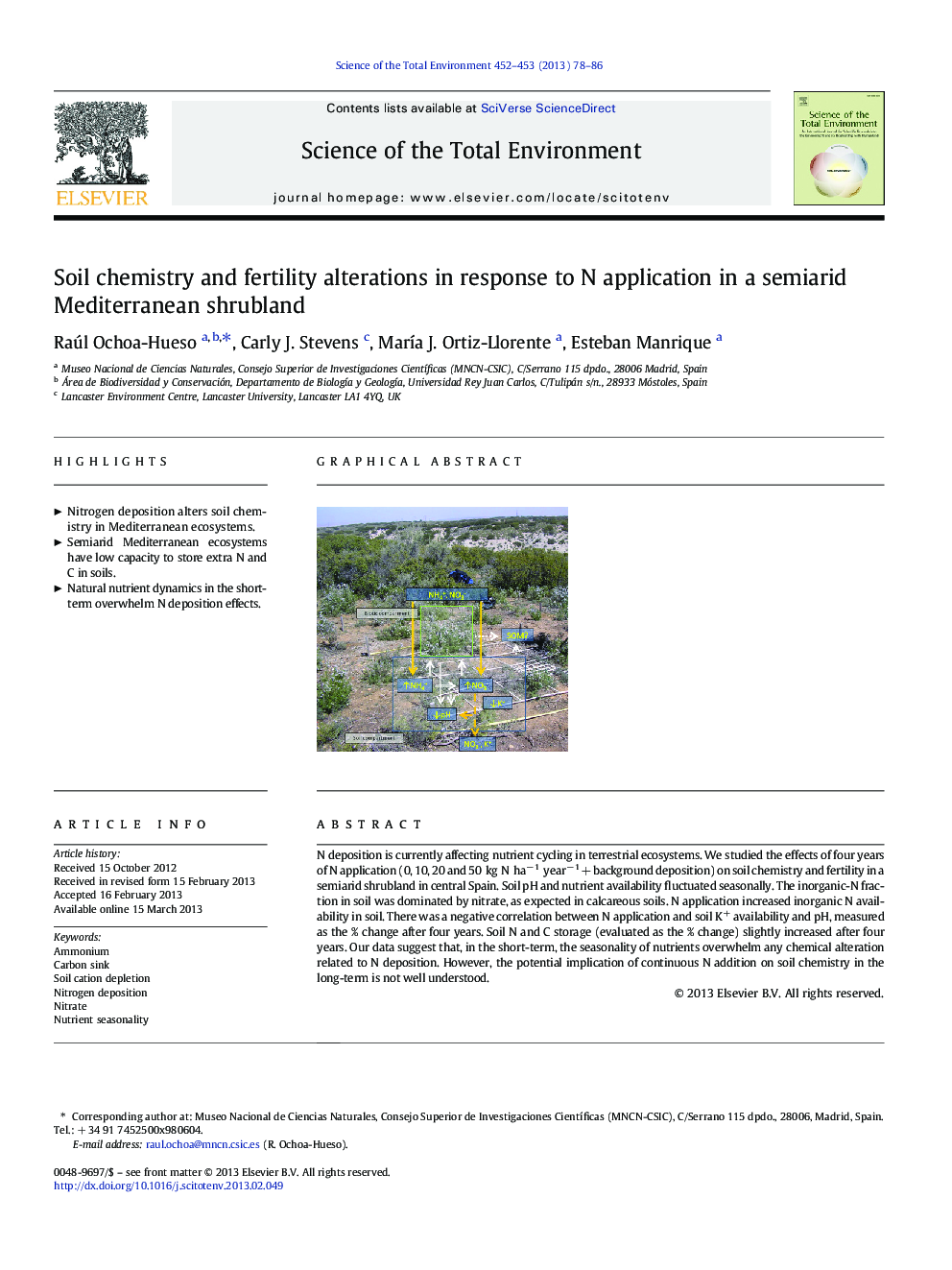| Article ID | Journal | Published Year | Pages | File Type |
|---|---|---|---|---|
| 4428742 | Science of The Total Environment | 2013 | 9 Pages |
N deposition is currently affecting nutrient cycling in terrestrial ecosystems. We studied the effects of four years of N application (0, 10, 20 and 50 kg N ha− 1 year− 1 + background deposition) on soil chemistry and fertility in a semiarid shrubland in central Spain. Soil pH and nutrient availability fluctuated seasonally. The inorganic-N fraction in soil was dominated by nitrate, as expected in calcareous soils. N application increased inorganic N availability in soil. There was a negative correlation between N application and soil K+ availability and pH, measured as the % change after four years. Soil N and C storage (evaluated as the % change) slightly increased after four years. Our data suggest that, in the short-term, the seasonality of nutrients overwhelm any chemical alteration related to N deposition. However, the potential implication of continuous N addition on soil chemistry in the long-term is not well understood.
Graphical abstractFigure optionsDownload full-size imageDownload as PowerPoint slideHighlights► Nitrogen deposition alters soil chemistry in Mediterranean ecosystems. ► Semiarid Mediterranean ecosystems have low capacity to store extra N and C in soils. ► Natural nutrient dynamics in the short-term overwhelm N deposition effects.
